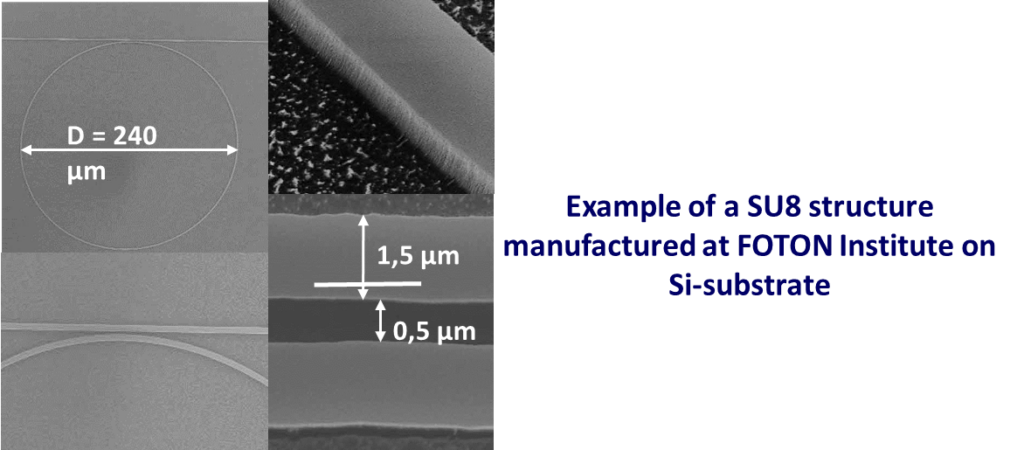Chemistry part
- Choose a good chromophore (dye) and synthesize it in sufficient quantity
Various structural modifications have been proposed to improve the NLO response of N-methylated styrylpyrimidinium dye:
-Reinforcing the electron-donating strength of the NPh2 group.
-Modifying the methyl in N1 of pyrimidine by other alkyl/aryl substuents.
-Optimizing the p-linker.
-Replacing the pyrimidine ring by quinazoline, a stronger electron withdrawing fragment.

Publication in Journal of Heterocyclic Chemistry
Non-linear optical part
- Validation of the ellipsometer for electro-optic properties measurement on thin doped polymer films
- Integration, orientation of these chromophores in a host matrix and obtaining sufficient electro-optical coefficients
Usually PMMA (Tg<110°C) is used at IPCMS.
BUT, in the project, the polymer must be subjected to temperatures of 115°C during the optical microring-resonator manufacturing process
HENCE, the choice of a new matrix: PC (Relative Temperature Index = 150°C)
To date, no conclusive results on EO materials
There are areas of segregation linked to the polymers used
Waiting for the latest IPCMS results from deposits
Design and fabrication of optical microresonator
- PC deposition optimization on Si-substrate ( and )
– Choice of the good solvent
– Optimisation of deposition parameters (duration, speed and acceleration)

- In addition, all stages of the optical microresonator manufacturing process were optimized for the SU8/PMATRIFE material pair
Design, fabrication and characterization of microwave 3D printed lens
- Design
– A study was carried out to explore diverse approaches to amplify gain or minimize the bulk and weight within microwave frequency ranges
Publication and poster presentation at JNM 2024 conference.
- Fabrication
- Characterization
– In order to characterize the microwave lenses (near-field measurement), a measuring bench from Kapteos was purchased as part of this project.
Publication and poster presentation at JCMM 2023 conference.
Difficulty: The eoSense EO converter from Kapteos is also very sensitive to stray EMicrowave fields, hence the construction of an anechoic chamber specifically for this measurement.
Measurement bench automation (10-week IUT internship funded by the SMART team of Lab-STICC)
The latest lens optimizations, their manufacture and the measurements made with the optimized measurement bench will be published in a scientific journal. After publication, the results will be posted on the website.
The remaining main hard point: EO material







